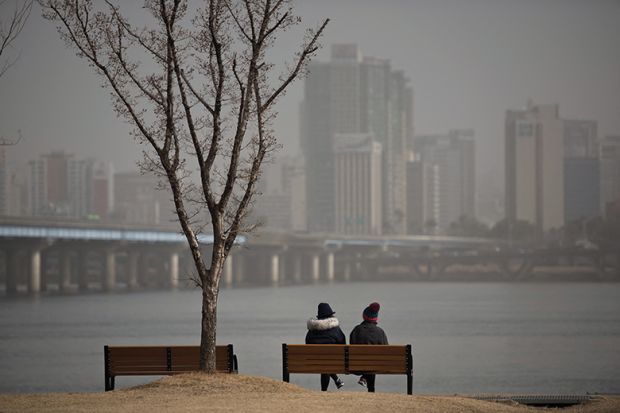Long before the bus reaches Yonsei University, it is evident that it is getting closer. As the crammed vehicle weaves through Seoul’s lunch-hour traffic, standing students in black-and-white Yonsei jackets deftly maintain their balance, readjusting their bookbags. In 20 minutes, they’ll join the throng streaming through Yonsei’s main gate, chattering excitedly in a variety of tongues, including Chinese, French and English, as well as some that are less easily recognisable to a Western ear.
The foreigners in this crowd are among the more than 4,000 who make up the university’s 39,000-strong student body, their presence attesting to the fact that Yonsei’s name, hallowed in Korea, carries weight far outside the country, too.
Known as one of the troika of the nation’s top “SKY universities” (alongside Seoul National and Korea universities), Yonsei is both highly funded and heavily oversubscribed – an administrator’s dream come true. But elsewhere in Korean higher education, things are not so peachy.
Last spring, news headlines warned of “zombie universities”, near-empty campuses that continue to operate despite the inevitability of ultimate closure. Official figures did not offer much cheer either, with Korea’s Ministry of Education identifying 84 financially insolvent institutions that needed to shut down.
And there are even greater challenges in the pipeline. By 2040, the number of Korean students eligible to enter university will drop to 280,000 – 39 per cent down from 460,000 in 2020, according to the Korean Council for University Education (KCUE), the representative association of four-year universities. Like neighbouring Japan, Korea suffers from a low birth rate and ageing population. But, here, the demographic cliff is much steeper.
Indeed, demographic decline has already put scores of universities out of business and there are calls for the government to help others shut down gracefully, perhaps by buying their land so that they can afford to offer severance pay to staff and faculty. If they are to avoid that fate, many others will have to grapple with a rapidly shifting enrolment landscape, on top of adapting to highly disruptive new technologies and the 180-degree policy pivots typical of the country’s change-loving political leaders.
With nearly 74 per cent of Koreans enrolling in higher education, it’s unlikely that more domestic learners can be lured into the sector. The focus, then, must be on admitting more foreigners, academics and policymakers broadly agree. But while this seems an obvious – if not a complete – remedy, the path to internationalisation is far from straightforward.
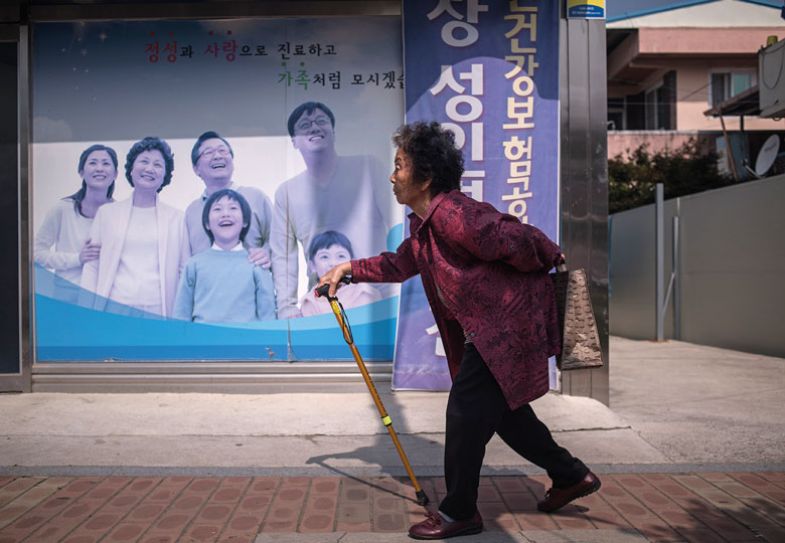
Last summer, the government published a plan to recruit thousands more international students by 2027. The Study Korea 300,000 initiative plans to make Korean universities more globally competitive and to increase overseas enrolment by more than a third, from the current estimated 180,000. But some scholars feel this is an arbitrary and unrealistic goal.
Jun Hyun Hong, a professor in the School of Public Service at Seoul’s Chung-Ang University (CAU) and an adviser to the government on the initiative, believes the aspiration is “unsustainable” because it puts production-like emphasis on outputs without fully understanding the complex human interactions behind them.
“I always say that education now is considered part of industry,” he previously told Times Higher Education. “This is an industrial view; this is not an education view.”
Hong is worried that without ensuring quality of education, a push to significantly increase the number of international students in Korea could ultimately backfire. Others argue that without institutional targets, it will be very hard to get all universities on board.
But even critics of the scheme, including Hong, acknowledge the urgent need for Korean institutions to bring in more international students. And, across the sector, there are signs of changes under way to do just this.
In December, for instance, Korean media reported that Namseoul University, a private university in Cheonan, 85km from Seoul, had become the first domestic institution to be certified by the International Baccalaureate Organization to train educators for the IB diploma, which is undertaken in schools around the world. The university has also launched various master’s degrees aimed at international students, including global techno entrepreneurship and international education.
Joonghwa Kim, director of the international office at Ajou University, a highly regarded institution based in Suwon, just 30km south of Seoul, marvels at the recent pace of change – and the increase in overseas demand for Korean degrees. “It’s something we could not have imagined 10 years ago,” he says. “Then, every Korean was trying to go out – now, every outside student is trying to come in.”
Like others, he credits the huge popularity of Korea’s cultural exports: K-culture, which includes popular novels and TV dramas, K-pop music, fashion and food. At Ajou, a large portion of overseas students take Korean literature and IT, the latter popular with the South-east Asians looking to move to Korea for higher-paying jobs.
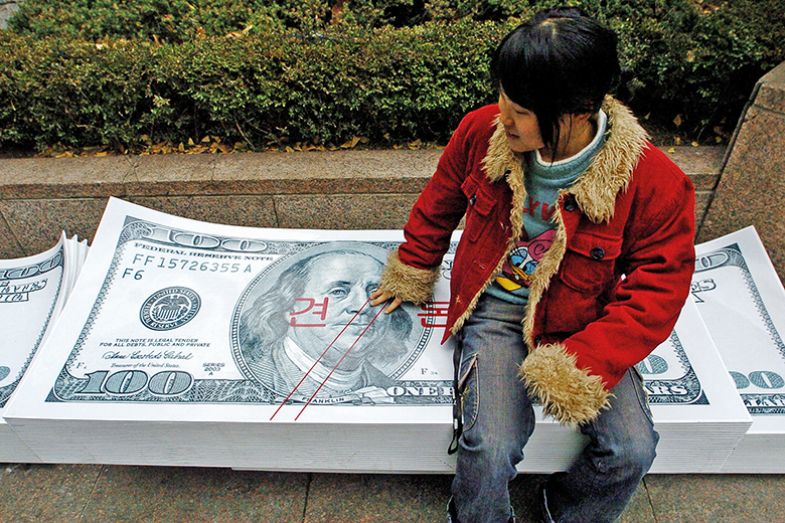
However, while it is not uncommon for Korean universities to host learners from around the region, there’s broad acknowledgement that Korean universities are not nearly as practised at catering to large non-local cohorts as Western universities are.
“Some universities are trying to host as many international students as possible…but without their infrastructure ready,” says Ajou’s Kim.
And although the benefits of throwing open their doors to non-Koreans are clear, it’s a tough ask for some universities, particularly the less prestigious regional ones, which don’t benefit from the draw – to both domestic and international students – of a Seoul location but for whom the cost of failure is likely to be closure.
Even at regional institutions that aren’t facing an immediate existential threat, demographic decline is not far from the thoughts of leaders. It’s what brings THE to Chungbuk National University in Cheongju, around 100km south of Seoul, on a grey, cold November morning, just hours before the year’s first snowfall. Already, the students seem to be avoiding the outdoors, huddled over laptops in nearby cafes, sipping extra tall iced teas – an apparently Korean habit that seems oblivious to the weather. But the sound of Chinese chatter betrays that not all of these learners are Korean.
Later, as THE’s meeting in the university’s formal reception hall begins, Chungbuk’s president, Chang-Seop Koh, sits forward in his armchair at the head of the room. He’s happy to answer questions, but first, he’s keen to ask one of his own: Is his university’s name difficult to spell? He reveals he’s mulling a foreigner-friendly rebrand to the university's acronym, CBNU – which he feels is more memorable to non-Koreans. It’s just one of a number of changes he has planned to kickstart internationalisation.
Not that internationalisation is his only tactic for future success. “If this university is going to survive for a long time, we should transition to a research-oriented university, which can provide theoretical and practical skills…especially for this region,” he says. Like some other regionals, Chungbuk is pivoting towards in-demand “practical” subjects in the STEM fields to buoy its domestic appeal. But it’s also clear that making the university more global will be a big part of its strategy.
To that end, Koh also wants Chungbuk’s domestic students – many of whom have never owned a passport – to at least be able to have a brief conversation with foreigners. He plans to send 500-600 students a year to undertake short, self-directed training courses at overseas universities and companies.
But the university will need to make big changes on the home front, too. Chief among them is the move to English as the medium of delivery for lessons. It’s a discussion playing out across the sector, with universities grappling with whether to introduce mandatory English requirements or, in some cases, create entirely English-language pathways of study for particular fields.
It’s easier said than done. At Chung-Ang, slightly under 30 per cent of courses were delivered in English in 2022, according to Hong, who was then CAU’s vice-president for international affairs. Back then, his drive to establish more English-only degree courses fell short of its target, with only three of the hoped-for 10 subjects creating such pathways. The university doesn’t mandate English for students, but about 15 years ago it began requiring all newly recruited professors to offer at least one course per semester in English. These days, young lecturers are usually “very good” at English, Hong says.
Elsewhere, some institutions, such as Yonsei and nearby Ewha Womans University, are centralising English courses via English-only units. There has been some discussion of a similar set-up at CAU, although it’s not guaranteed to happen, Hong notes. Still, he’s unequivocal about the direction of travel.
“One thing is sure: we are making an effort to expand English,” he says. “We call that English track – not English-only majors, but parts of majors we can make English-only programmes. But definitely we are aiming to expand this.”
At Chungbuk, too, this is the trend. Koh says that in the “very near future”, most of its graduate classes will be delivered in English, particularly in engineering and natural sciences – something he believes will improve domestic students’ job preparedness. Down the line, he says, even more Chungbuk professors will need to give lectures in English.
When THE visits Chungbuk’s campus, the institute has just received a vote of confidence, securing funding through the government’s Regional Innovation System and Education (RISE) excellence initiative, meant to help dozens of universities upgrade their offerings. Under the plan, the government has awarded an initial 10 “Glocal” regional universities a 100 billion won (£60 million) grant over five years; that number is expected to increase to 30 by 2027.
These institutions’ willingness to pledge sweeping and potentially difficult changes to their teaching and research no doubt speaks to the perilousness of their current financial situation. Nevertheless, they are in a better place than peers that have neither the resources nor the infrastructure to accommodate foreigners. Such universities face a catch-22 situation: internationalising needs investment, but securing government funding – the likeliest source of a cash influx – requires them to show they are already innovating and attracting foreigners. And however imperative internationalisation might be for long-term survival, some just can’t afford the upfront costs.
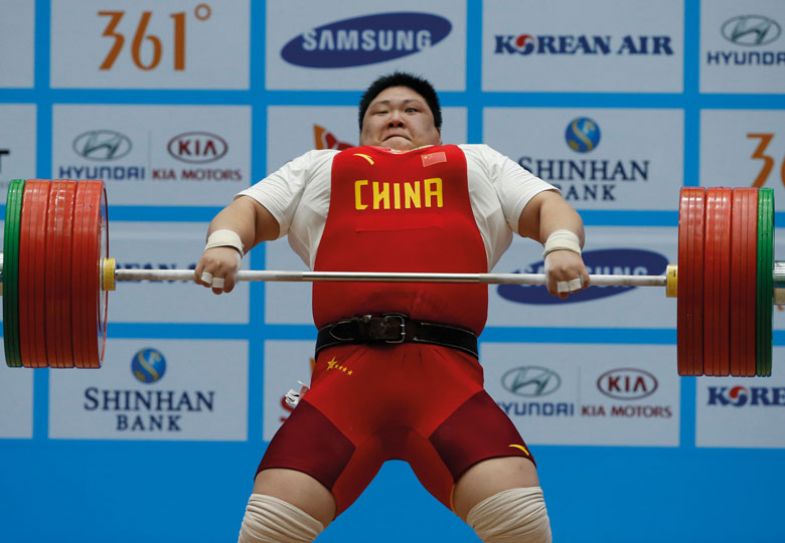
Demographic decline is less pressing for Korea’s top universities, but there are signs of its looming presence even here. At one top institution, a professor admits that laboratories would stop running were it not for international PhD students. Others make similar points: no institution, no matter how prestigious, is fully immune from the effects of a population bust.
“There’s no way we can survive without any international students in the future – our demographic structure is changing a lot,” says Kyo-seong Kim, vice-president of planning and budget at CAU: “Even though we try to make more money from outside the university, like research funds, hospital [and the president’s industry] fundraising…in order to survive, we have to have at least 20,000 students in our campus.”
Chong-yang Kim, president emeritus of Hanyang University, agrees. “We are not free from that fear, even though Hanyang University is located in Seoul,” he says.
The private research institution, which offers more than 150 courses, has recently seen a dip in demand for some subjects, particularly in the humanities and social sciences. Having previously recruited 40 students for subjects such as German and philosophy, it now gets about half that number, Kim says.
While the trend has much to do with student preference and employer demand, a decline of students down the road could threaten the future of some courses. Could Hanyang be forced to close them? Kim is adamant that this would be a mistake, seeing a diversity of offerings as core to Hanyang’s status as a university. And he believes that by requiring undergraduates to take more subjects outside their discipline, the university can sustain less popular departments.
“This is not a college,” he says. “All of the students at Hanyang should take at least one philosophy course, at least one in humanities.”
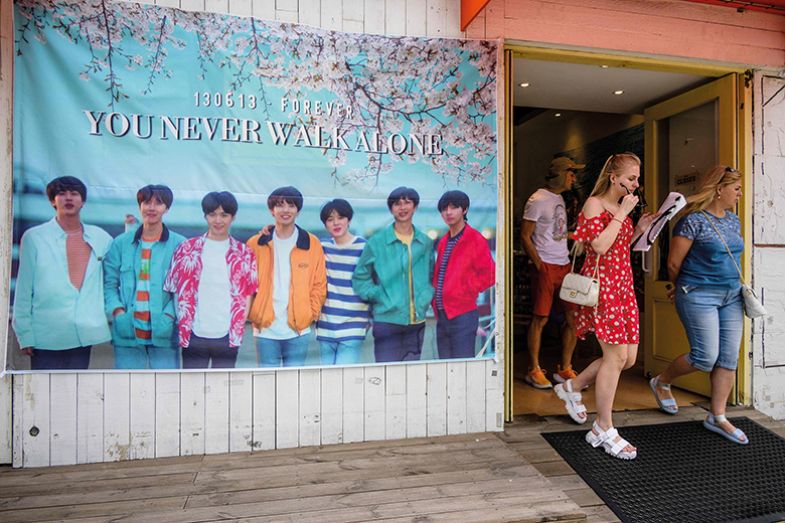
It is clear that particular courses would also be under less pressure if they were better able to recruit from abroad. But if overreliance on domestic enrolment is potentially problematic, so is relying on the Chinese market.
Currently, Chinese students make up roughly half of Korea’s overseas intake, but recent political tensions offer a cautionary tale. In 2017, Chinese officials expressed dismay over Korea’s plan to adopt a US-backed defence system. Subsequently, Korea saw a steep decline in Chinese enrolments, and although university administrators approach the topic warily, a couple recall anecdotes of Chinese students being pressured not to go to Korea in the wake of the spat. And while no one seems to have found the magic bullet for diversifying Korea’s overseas learners, there’s broad recognition that Korean universities, like their counterparts in other China-adjacent sectors, shouldn’t put all their eggs in one basket.
For universities with well-established international student flows, it makes sense to try to increase their portion of students from other leading source countries. These include the South-east Asian nations, as well as from Uzbekistan, which supplies Korea’s third-largest overseas cohort, after China and Vietnam. Some institutions are looking further afield, including at India and Africa.
Where China is concerned, quality – both of the students themselves and of Korean universities’ offer to them – remains a concern. Chungbuk’s Koh suggests that Korean universities may be turning a blind eye to students’ competencies in the race to fill seats. “In this country, customarily we are very generous after they enter university,” he says. But he soon ditches the euphemism. “This is selling the degree; that is very far from what this university should do.”
Euiho Suh, a vice-president at Ajou, shares concerns over low-quality students. “The quality and quantity issue is hanging around in every university,” he says, adding that there’s trouble when foreign students understand neither Korean nor English.
When he came to Ajou from the renowned Pohang University of Science and Technology (Postech), he emphasised increasing the number of English lectures. “Some faculty told me ‘I understand [the need for this], but some foreign students, particularly from…China, do not speak English either’, so that’s a problem we need to solve.”
In reaching out beyond its immediate neighbours to recruit learners, Korea’s higher education sector will also need to put in more work to integrate students from different cultures. Some of those changes are already under way. During Hong’s time as vice-president for international affairs, CAU set up its first Muslim prayer space. Initially meant to cater to Malaysian students, this could also come in handy if the university sees a greater influx of students from the Middle East or northern Africa, Hong believes.
“Compared with the past, we’re more and more keen to have Middle Eastern students – but I don’t think it’s an easy one because [of the differences in] cultures and religions,” he says, adding that India is also a “rising partner”.
Not everyone, though, is looking to increase international students. Hanyang, which has the largest overseas cohort among Korean institutions, is doubling down on providing a quality experience for them rather than seeking to further boost their numbers, says Kim, its former president. That means ensuring that they aren’t left feeling cast adrift and lonely in an unfamiliar place: a feeling especially likely to occur during Korean holidays, such as Chuseok, the “Korean Thanksgiving”.
“During one week of Chuseok, where are they going? The only places open are convenience stores,” Kim says.
Kim wants to use such opportunities to give students “lovely memories” that they can share when they return home – or, better yet, that inspire them to return to Korea, perhaps for further degrees.
But how can the country ensure that it attracts these students in the first place? Hanyang’s Kim believes the government can give a helpful push by supporting post-study work visas, which remain difficult to secure for foreign students. Alongside other senior figures, he has been lobbying for this, and the efforts seem to be bearing some early fruit. Last autumn, the head of Korea’s North Jeolla province won approval for a trial programme permitting 400 work visas for foreign graduates there – allowing those on short-term visas to extend their stay for up to five years as long as they live or work in regions with declining populations. Hanyang’s Kim hopes this will herald similar allowances across the whole country.
From the supply side, the signs are also encouraging. If anything, interest in Korean studies abroad appears to be growing.
This November, for instance, the University of Sheffield announced it was establishing a Centre of Korean Studies, with funding from Korea’s Ministry of Education. In 2023, for the first time, more students at the Netherlands’ Leiden University registered for Korean studies than for Japanese studies. And, anecdotally, Korean scholars recount stories of visits to Western campuses during which they hear that Korean departments are becoming more competitive.
It’s clear that the soft power of K-pop and K-culture is continuing to increase interest in Korea from overseas, particularly among the younger people its universities are seeking to attract. And for those institutions that manage to match academic excellence with a welcoming environment for overseas students, the rewards are likely to be music to their accountants’ ears.
